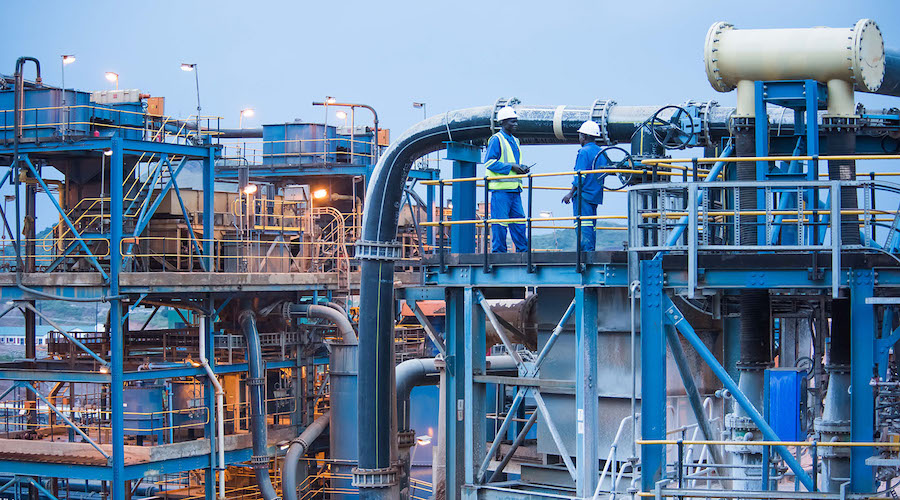Teck-Glencore JV begins environmental studies to jumpstart stalled Minnesota project

NewRange Copper Nickel is embarking on a series of studies over the next year to assess whether new mining technology and sustainability developments can further enhance the environmental safeguards and performance of its key project in Minnesota.
Newrange is 50/50 joint venture established by Teck Resources and Glencore for developing the NorthMet and Mesaba deposits – two large, distinct, and well-defined copper-nickel-PGM (platinum group metals) resources in the Iron Range mining region of Minnesota.
These studies focus on the more advanced NorthMet project, which is located near both existing and closed iron ore mines and utilizes existing brownfield tailings storage and plant locations to minimize environmental impact. The proposed mine is expected to process 29,000 tonnes of ore per day over a 20-year permitted mine life, with first production targeted for 2026.
In June 2023, the US Army Corps of Engineers revoked the project’s Clean Water Act Permit, citing a failure to comply with water quality standards of the Fond du Lac Band of Lake Superior, rather than those of the state of Minnesota. NewRange is currently reviewing the approach to permitting.
The news studies, according to the company, are designed to meet all permitting requirements. Proposed changes may be subject to supplemental environmental review and permitting, and will include multiple opportunities for public comment and feedback.
For these studies, NewRange plans to bring a new team whose global expertise on tailings storage, water science, efficient production and carbon reduction will ensure the project remains on the cutting edge for the benefit of Minnesotans and the nation as a whole, it said.
The studies position NewRange to support the US clean energy transition and compete in the global economy by creating a domestic supply chain of multiple clean energy minerals – while limiting new environmental impacts and cleaning up former mine sites, NewRange said in a press release.
“As momentum continues to sustainably develop NewRange, we are sharing our plans before studies are complete, because transparency and engagement with Tribal Nations, local communities and other stakeholders are foundational to the review process and contributes to development of a world-class mine on Minnesota’s Iron Range,” NewRange president Tannice McCoy said in the release.
Tailings storage
NewRange is studying a variety of tailings storage options that will minimize impact by reusing the former LTV iron ore tailings facility and clean up impacts from previous iron mining operations. These include keeping the current design detailed in permits, potentially refining the current design to use a centerline dam design, or possibly relocating tailings storage to nearby unused mining pits.
“Our NorthMet project already represents the largest private investment in the cleanup of former mine sites in Minnesota’s history. We are evaluating if we can make this project even better,” McCoy said.
“Regardless of which option is identified as the best solution, our objective is to ensure that tailings storage is safe and stable, and that we take advantage of any reasonable opportunities to clean up old contamination.”
A comprehensive network of water monitoring locations will provide the baseline data to help ensure that NewRange meets or exceeds state, federal and tribal standards before, during and after operations.
Water science
NewRange is reviewing planned water treatment technologies, which already meet all applicable water quality standards.
This review allows its team of water experts to evaluate new opportunities to address water quality and management challenges from historic and proposed new mining operations, protect the local environment, and safeguard water quality for generations to come.
“Our groundbreaking water treatment and management plan already has in place more water and wetland monitoring than all other Minnesota mines combined, and we will invest over $100 million to modernize the previous mining site to meet or exceed stringent water discharge standards,” McCoy said.
“NewRange will be the first industrial project to meet the state’s long-standing ‘wild rice standard’ for sulfate discharge limits. Currently, we know of no other business that has achieved this standard.”
Efficient production
NewRange is studying how to utilize the existing footprint to modestly increase production from 32,000 tons per day to 40,000 tons per day to deliver an increased domestic supply of high-demand copper, nickel and cobalt, while reducing project emissions.
“We’re studying how to build a more efficient mine – not a larger one. With new equipment developments, increased production may decrease the energy intensity of clean energy metals produced. We hope this study identifies a win-win: using less energy to deliver copper, nickel and cobalt when a secure domestic supply of critical minerals is most needed,” said McCoy.
There would be no change to the project’s 225 million total tonnage of minerals currently permitted for mining and processing. However, if feasible, increased daily production could shorten the mine plan from 20 years to 15 years.
Carbon reduction
NewRange is also studying how to reduce greenhouse gas emissions (GHG) project-wide in the near and long term.
“Current plans call for the reuse of existing railroad infrastructure to move ore for processing by diesel locomotive. While rail is generally efficient, we are exploring electric ore transport methods, like greater use of conveyors, to further reduce emissions,” said McCoy.
“We are also studying whether an opportunity exists for NewRange to have a net negative carbon footprint, thanks in part to the unique geologic characteristics of its rock formation. NewRange is exploring various techniques to sequester carbon in the mine tailings,” she added.
More News
Barrick outlines growth outlook for Kibali in the DRC
Kibali is Africa’s biggest gold mine.
July 03, 2025 | 10:00 am
{{ commodity.name }}
{{ post.title }}
{{ post.date }}

Comments